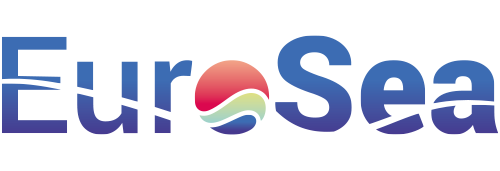
Description
The integration of a regional dashboard that displays maps and metrics for crucial marine regions like the Mediterranean, Atlantic, and Baltic offers a centralized platform for stakeholders to visualize and analyse oceanographic data. Such dashboards bring data-driven insights to the forefront, allowing for more informed decision-making related to marine conservation, navigation, and various other oceanic endeavours.
Impact During the Project
User-Centric Design: The emphasis on understanding the profile and use of dashboard users ensures that the dashboard remains relevant to its audience. By collecting feedback from the working group, there’s a continuous improvement mechanism in place.
Transparency and Accountability: By allowing targeted users to assess regional/national adequacy/commitment through the dashboard, it promotes transparency and accountability among stakeholders and authorities involved in marine activities.
Impact Post Project
Data-Driven Decision Making: The regional dashboards serve as a critical tool for stakeholders to base their decisions on data rather than just intuition or anecdotal evidence. This data-driven approach will likely lead to more effective and efficient strategies and solutions for the challenges faced in these marine regions.
Potential for Expansion: With the metric of funding for a European-wide dashboard or European OceanOPS, there’s an acknowledgment of the potential scalability of such dashboards. It shows promise for expanding this initiative to other regions or even on a pan-European scale.
Enhanced Collaboration: With centralized dashboards for multiple regions, there’s potential for increased inter-regional collaboration. Stakeholders from different regions can share insights, challenges, and solutions, fostering a collective effort towards oceanic conservation and sustainability.
Advancement over and above State of the Art
Unified Platform: While individual marine data repositories might exist for different regions, a unified dashboard that offers maps and metrics across multiple key regions is a significant advancement. It centralizes information and offers a singular platform for stakeholders.
Feedback Mechanism: Traditional systems may not have incorporated feedback loops. Here, with the integration of feedback from working groups, the dashboard remains dynamic and continuously refined based on user needs.
Scalability Indicator: The inclusion of a metric related to the potential funding of a broader dashboard indicates foresight and an ambition to scale and expand this initiative.
In essence, this regional dashboard initiative represents a blend of data centralization, user-centric design, and scalability. This holistic approach to marine data visualization and analysis is a marked advancement over traditional oceanographic data systems. It promotes more informed and collaborative efforts towards understanding and preserving marine regions.
Links and References
NA
